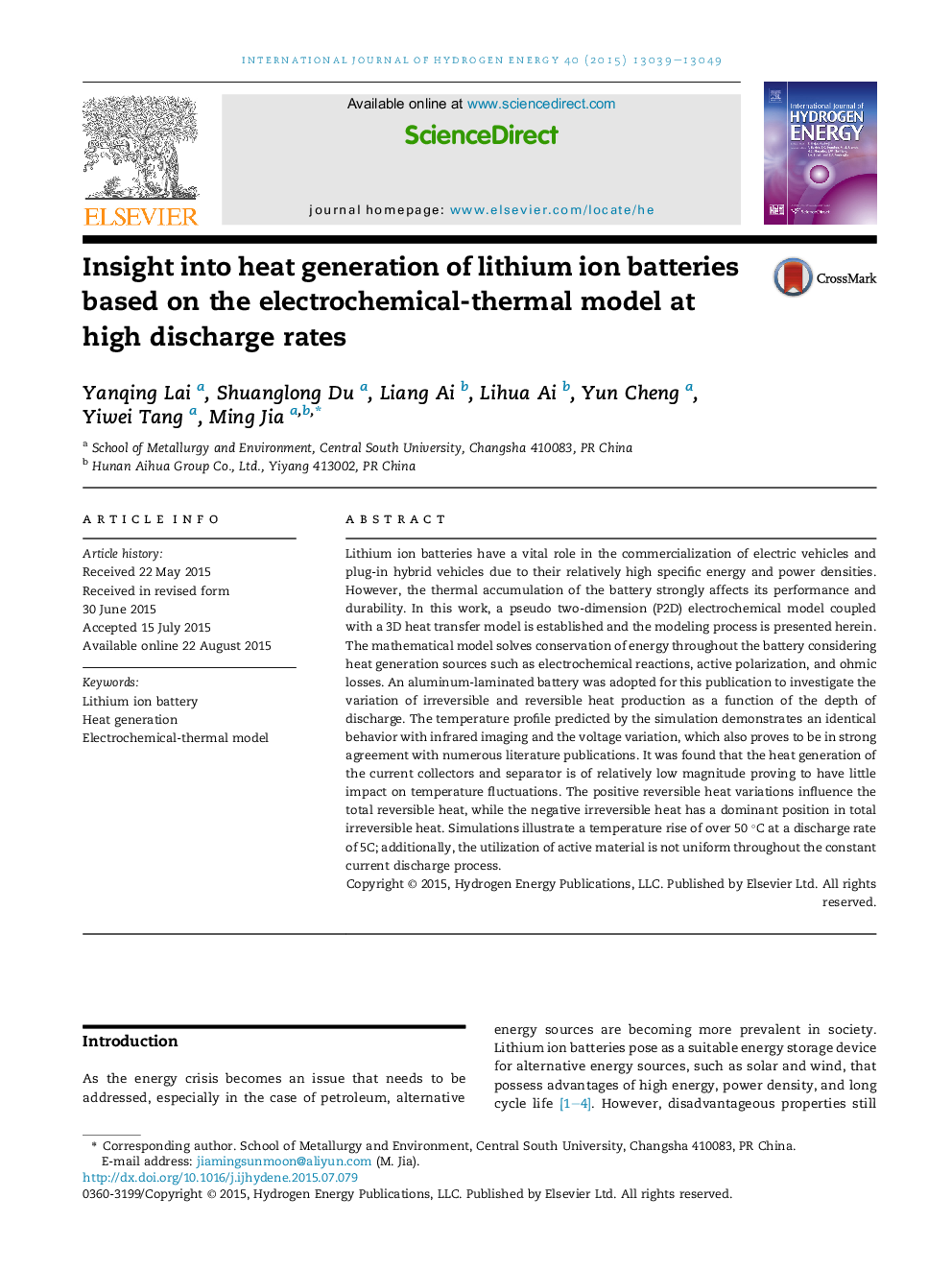| کد مقاله | کد نشریه | سال انتشار | مقاله انگلیسی | نسخه تمام متن |
|---|---|---|---|---|
| 1269220 | 1497435 | 2015 | 11 صفحه PDF | دانلود رایگان |
• An electrochemical-thermal coupling model is established.
• The dynamic parameters were considered into the model.
• The thermal behavior of soft package lithium-ion batteries are validated through infrared imagery and discharge curves.
• Every part of heat sources constructions are analyzed through simulation method.
• It provides an effective method when calculating the heat inside the battery.
Lithium ion batteries have a vital role in the commercialization of electric vehicles and plug-in hybrid vehicles due to their relatively high specific energy and power densities. However, the thermal accumulation of the battery strongly affects its performance and durability. In this work, a pseudo two-dimension (P2D) electrochemical model coupled with a 3D heat transfer model is established and the modeling process is presented herein. The mathematical model solves conservation of energy throughout the battery considering heat generation sources such as electrochemical reactions, active polarization, and ohmic losses. An aluminum-laminated battery was adopted for this publication to investigate the variation of irreversible and reversible heat production as a function of the depth of discharge. The temperature profile predicted by the simulation demonstrates an identical behavior with infrared imaging and the voltage variation, which also proves to be in strong agreement with numerous literature publications. It was found that the heat generation of the current collectors and separator is of relatively low magnitude proving to have little impact on temperature fluctuations. The positive reversible heat variations influence the total reversible heat, while the negative irreversible heat has a dominant position in total irreversible heat. Simulations illustrate a temperature rise of over 50 °C at a discharge rate of 5C; additionally, the utilization of active material is not uniform throughout the constant current discharge process.
Journal: International Journal of Hydrogen Energy - Volume 40, Issue 38, 15 October 2015, Pages 13039–13049
